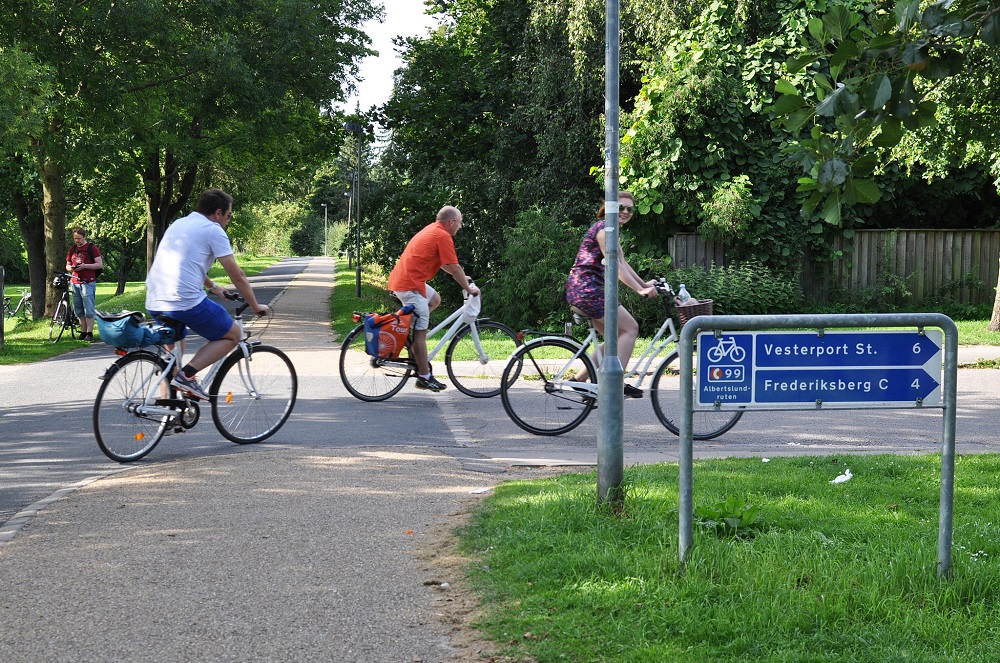Wales can lead the way with the world’s first national cycle super-highway

Warren Davies
One of the disappointments of devolution has been that the current Labour Welsh government doesn’t seem to care about building a nation.
Poor transport links between the north and south make the news as being a ‘barrier to tourism’, rather than a problem for the people who live here.
It’s a barrier to building an integrated economy in Wales, and keeps us dependent on our east-west transport links, as we have been since the industrial revolution.
Sustainability is already enshrined in law by the Well-being of Future Generations Act. But the government seems to set to ignore its own law and is pressing on with the M4 relief road and other east-west road improvements.
They have already spent nearly £28m on preparing to build the road. Rather than developing a nation, the government, led by big business seems set on inducing demand and increasing traffic over the border.
For those concerned about the Welsh nation discussions about North-South rail links and dual carriageways are common. Turning the A470 into a dual carriageway is often put forward as a solution.
But it seems unlikely to happen any time soon. While it would unlock economic potential, businesses will always prioritise the east-west links already in existence. Such a development would easily be scuppered by concerns about cost and environmental issues.
Plans to re-open the line from Carmarthen and Aberystwyth by Trawslink Cymru are the best we’re likely to get in terms of rail transport.
So here is my suggestion; If we can’t have a road or a railway, let’s have a cycle-superhighway. I propose a 140-mile cycle path, as straight, level and smooth as possible between Wrexham and Cardiff, to avoid the hilliest terrain.
This would be a symbolic link between our north and south, and make a statement that we are a forward-thinking, healthy, active nation.
It would join up some of the most anglicised areas of our country. The symbolic route would place a Welsh connection into the hearts and minds of those who are perhaps least likely to feel that they are part of one nation.
£60m
Ireland has been opening a number of long-distance cycleways. Last year they opened 28 miles of superhighway through the countryside between Dungarvan and Waterford.
The route, an old railway, included numerous bridges and tunnels. The extent of the engineering challenge can be glimpsed in this report.
Ireland certainly isn’t alone with long distance cycle paths popping up. Germany is building a 60-mile cycle superhighway. Planners estimate the path will take 50,000 cars off the roads every day.
In Italy a 420-mile route has been proposed between Turin and Venice.
In Wales Sustrans already promote ‘Lon Las Cymru’ as a North-South bike route. The route is fantastic for leisure cyclists.
But large sections of it are on roads, and many surfaces are rough. It cannot be considered a cycle-super highway, which avoid road traffic altogether.
How much would a Welsh cycle super-highway way cost? If we look at the recent Dungarvan-Waterford project, 28 miles cost approximately £16m.
Using this price as a guide; The route from Wrexham to Cardiff is about 140 miles. About 50 miles of this is already a cycleway, ‘The Taff Trail’.
Building the remaining 90 miles would cost in the region of £50m. Then allowing £10m for upgrades to the Taff Trail we have a total of £60m.
So an investment of only £60m would allow us to provide a fantastic symbolic link for the country. A link that would let the World know that Wales is a forward-thinking, active, healthy Nation.
This relatively small investment could connect our nation, and become a piece of infrastructure we can be proud of, just like the national coastal path.

Link
If we use the old Mid-Wales railway for the route, then we can preserve the old route so that in the future, if the time comes, we at least have the option of laying rails next to the cycleway.
The route would link into many communities, joining active travel networks that are starting to be developed in towns and cities. The route will provide a trunk from which many branches can grow.
If successful, branches could be added to all corners of Wales. A cycle-superhighway by no means replaces local Active Travel networks, it doesn’t have to be one or the other.
All over Europe we have emerging health epidemics caused by obesity and, an even bigger killer, inactivity. To combat this we need both safe local routes, and bigger connecting trunk routes like this.
The route would become the longest continuous entirely off-road cycleway in the UK, and amongst the longest in Europe. This, alongside our National coastal path, would become an inclusive showpiece for our nation.
Travel across this route needn’t be slow, as bikes have moved on tremendously in the last 10 years.
Adapted bikes and trikes exist for those who have mobility difficulties. Cargo bikes for an adult and up to four children are an everyday occurrence in the Netherlands.
Fast electric bikes as seen in many European countries open up longer commutes to those with less physical fitness or with mobility issues.
The price for a cycleway superhighway is not astronomical, and there is something in it for everyone. For those looking to build a nation, there is a physical link and a statement about our country.
For those interested in tourism, this would become a huge tourist attraction. For those interested in public health and the environment, it ticks big boxes there too.
I’d love to hear what you think in the comments below.
Support our Nation today
For the price of a cup of coffee a month you can help us create an independent, not-for-profit, national news service for the people of Wales, by the people of Wales.




